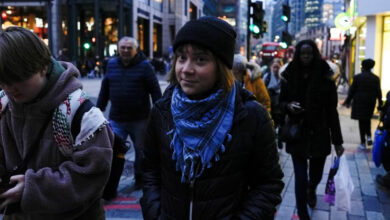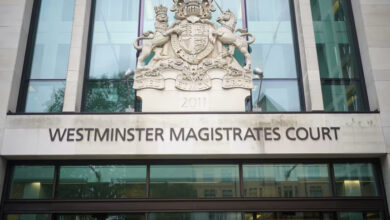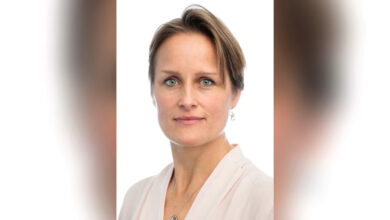Last November, two Asian Muslim university students were stabbed in central London on a Thursday evening after they were surrounded by more than 30 white and black youths. A passerby who tried to defend the students was knifed as well.
The incident is the worst, following a series of verbal abuse directed at male and female Muslim students (especially those covered in concealing garments known as niqabs), and the latest of a string of physical attacks that in one incident left one student with a fractured skull, according to reports by the Guardian at the time. The incident happened near City University, and the victims were undergraduate students, all younger than 20 years of age. Some arrests followed the stabbings.
At the time, criticism of the university’s Muslim students was rising, especially on right-wing blogs. And the university’s Islamic Society (ISOC) known as City ISOC, which is the equivalent of an Islamic campus club or Usra as these organizations are known in Egypt, was accused of harboring radical students and hosting events featuring extremist Muslim clerics.
The Federation of Student Islamic Societies told the Guardian after the attack that there had always been sporadic attacks directed at Muslim university students.
Weeks after the incident, the alarm remained, both with Muslim students who feared for their lives and with others in the non-Muslim British community. Not a few number of young people, experts, journalists and citizens have remained highly suspicious of young Muslims–if protests, letters to local and national newspapers, local news reports and opinion columns are anything to go by.
The events that followed didn’t help alleviate any of the fear or the suspicion on both sides.
Emails from the Islamic Society of the City University, where I acquired a masters degree in investigative journalism, flooded my inbox since I’m signed up to their mailing list.
The young heads of the City ISOC, which besides being centered on religion also does charity work, were extremely worried. The acting vice-chancellor of the university, Professor Julius Weinberg, had given Muslim students the freedom at the time to skip late afternoon and evening classes and go home early for their safety.
Some of the emails sent around advised Muslim students to “always travel in groups, do not go home alone. Leave university by 4 PM. Be vigilant, careful and stick together … Make constant duaa [supplication] to Allah … do not despair for the victory of Allah is indeed near. Listen and obey the order of the Ameer [headbrother] and let’s be patient and supportive to the brothers.”
The excerpt was from an email from the “sisters,” female members of the City University ISOC. As the case with many Egyptian Muslim student groups, boys and girls are segregated during prayers, activities and even on electronic mailing lists.
Clearly, the students were shaken. More follow-up emails were sent.
But all efforts from the university to make the students feel safe and integrated went downhill when, months later, specifically in March 2010, the Muslim prayer rooms at the university were closed down. At the time, John Tibble, director of services for students, had told the student paper City Offline that this action was taken following the knife attacks for the protection of the students themselves, denying it was a discriminatory action, as Muslim students had claimed.
“The university has to think about the security and safety of their students first and foremost. We don’t think the risk to our students is any less now than it was in November. When students finish in the evening they come out and disperse in a way that all university students would disperse,” he was quoted as saying.
Muslim students, however, were not convinced, and protests took place on campus in addition to congregational mass prayers on Fridays in the university’s square as a form of protest. When the university offered a new prayer space that is not exclusive for Muslims, the ISOC placed a sign on it reading, “It is Haram (forbidden) for Muslims to pray here,” accompanying it with the Quranic verse “And the places of worship are only for Allah, so pray not unto anyone along with Allah,” suggesting that this verse forbids Muslims to pray where non-Muslims do.
They were angry and vocal, and for some understandably so, and the incidents spurred a series of questions and discussions on-campus and off, on faith, safety and what exactly Muslim students say or do in their meetings and their closed-off prayer rooms. And for many, those questions were legitimate.
However, in lieu of further wide discussions, or perhaps more deliberations, between university management and members of the Islamic society, the university ruled last month that “it is no longer associated by the Islamic Society after a report found that the society’s actions and views reflected those of a small minority of radical Muslim students,” according to editor of student newspaper City Offline Jonross Swaby.
“It was found that the majority of Muslim students did not agree with the society, in which Shiite Muslims in particular were reportedly treated as outcasts–leading a separate society to be formed for Shias,” said Swaby. “In the coming months, a new, more inclusive Islamic society will be set up, which should be approved by the university.”
Since this decision is fairly recent, it’s yet to be seen how provocative it will be for the students now termed “radical” by the university’s administration. Or not.
By the time the stabbings happened, I’d just finished an investigation into some of the claims against Muslim students, and City’s in particular, charging at precisely some of these questions and worries.
Extremist ideologies did seem to be burgeoning among British Muslim students, upon initial inspection. And the popularity of Imams, literature, and events that channel Islamist and separatist ideas to vulnerable young Muslims through university-based Islamic societies seemed to be a problem that both universities and government, it seems, did not know how to deal with, without appearing “Islamophobic,” politically incorrect and without tramping on essential human rights, like the freedom to believe and practice faith freely.
Reactions seemed to waver between being over-sympathetic with students or too harsh or dismissive. There didn’t seem to be a middle ground in which fruitful discussion and introspection within the Muslim community could take place.
Investigating issues of terrorism and the allure of extremist ideology and Islamic militancy among university students is a very complicated issue. Like a cobweb, each thread intersects with another and in the end everything is connected: anti-terrorism policy, human rights, arbitrary arrests among Muslims and visitation to their houses by the British security service, known as MI5, or police, allegations of complicity in torture, media biases, the influence of oil-rich countries like Saudi Arabia, who not only advocate an extremist and uncompromising form of Islam but also export it to Europe, Islamophobia, the popularity of certain outspoken Arab and Pakistani sheikhs and Imams, and identity problems among students.
In short, it’s a monstrous and murky issue, but it is a timely one. At the rate at which some Muslim students become alienated from their Western community and feel victimized and angry, it wouldn’t be an exaggeration to say it’s a ticking bomb. Some of the clerics, which I have seen praised by some students, like Anwar al-Awlaki are turning out to be not as “harmless” as they had been thought to be years earlier. Al-Awlaki, who has become central to my research because of the status he holds among many students, has just been warned against as a rising threat during a talk in June 2010, held by the Carnegie endowment for International Peace, because of his ties to Al-Qaeda and his “powerful appeal to violent extremists.”
What does this mean? Does it follow then that acolytes of Al-Awlaki in British universities are “violent extremists” or “terrorists”? Do ISOCs indeed carry within their ranks hidden “terrorist” cells? Not all all. Or at least not necessarily.
It doesn’t seem to be a white-and-black issue; there are no easy answers, as experts and observers I interviewed have testified. And in my investigation, which will be published starting next week in a series of four stories, I set out not only to examine evidence of extremism, radical Saudi-style ideologies in universities and the degree to which some politicized Imams are popular among students, but to also give an insight into the campus life of some conservative Muslim students and the activities they engage in through their respective Islamic societies, which serve as their number one source for same-faith friendships and peerage, literature, charity activities and Islamic education.
Readers who have attended university in Egypt should be able to draw parallels between the experiences of these Muslim British students and their ultra-conservative counterparts in Egyptian universities. The work should provide an insight into the lives of these students, why they choose certain ideologies, and what attracted them to certain speakers or to the ISOC itself.
It’s not meant to be inclusive and it certainly doesn’t set out to place a verdict on either Muslim students or those who misjudge them. It also doesn’t clear the Muslim community of responsibility towards the “radicalism” that takes place inside the heads of some of these students, whether through university societies, mosques, powerful Islamic figures or the lack thereof. And it doesn’t lift responsibility off the students’ themselves.
The work, which will come out every Monday and Wednesday, takes the form of a narrative and aims to be literary and entertaining as well as informative.
In a separate column, to be published in the wake of this series, I will also shed light on the journalistic and individual challenges that I have encountered during research and reporting for this story, why I chose to write about the subject and some of the lessons that this journey might have taught me.




